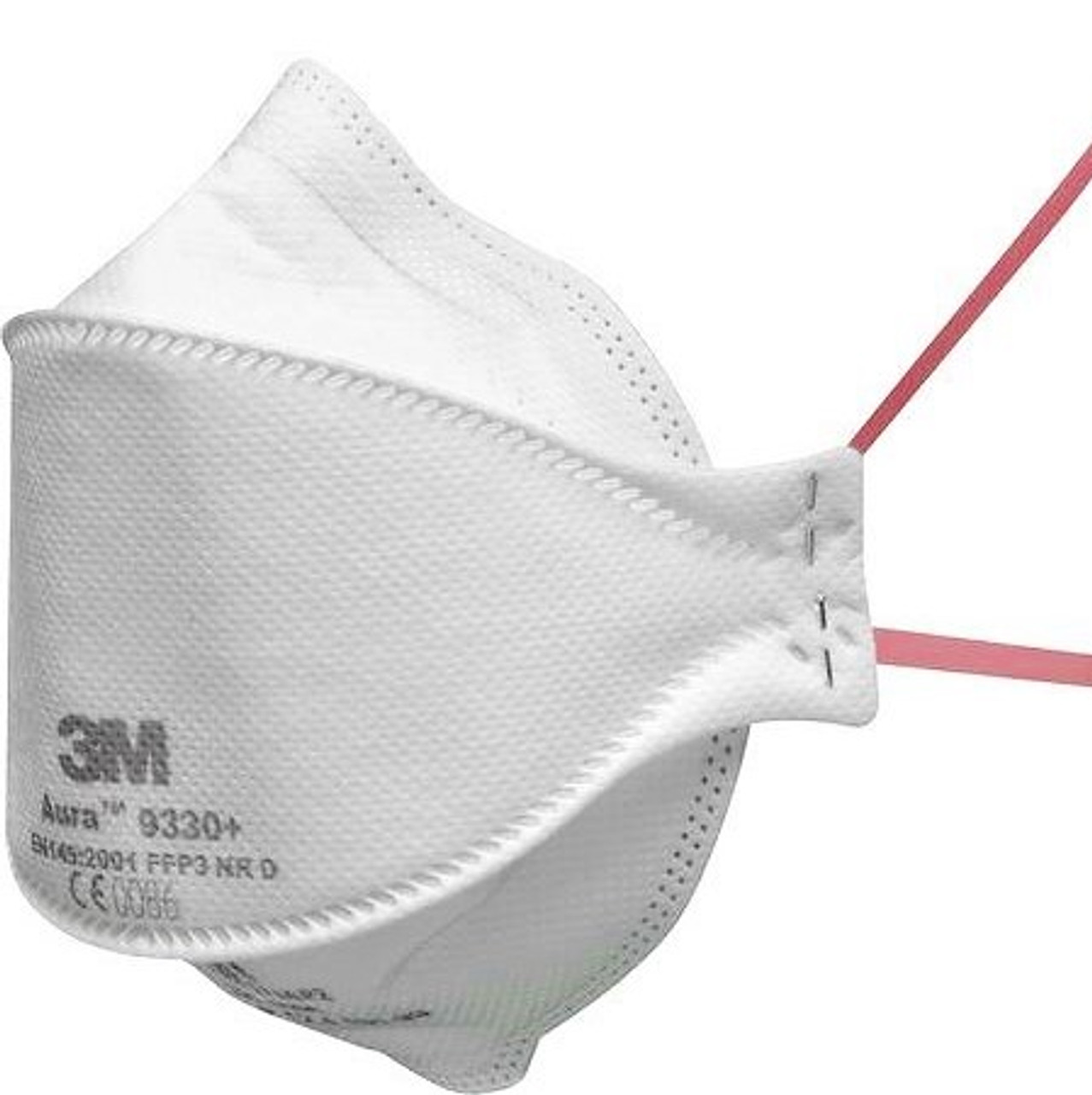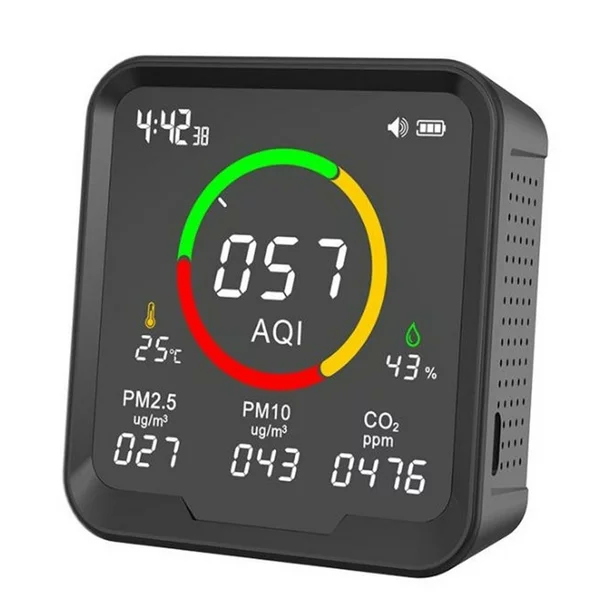
Covid19 lingers and spreads in the air like smoke, only we can’t see it nor smell it because its carried on the water vapour particles that humans exhale from their lungs. Various research projects show it can survive for several hours in indoor environments before the environment damages it to the point it is no longer being able to infect someone. Just because a room is empty doesn’t mean it doesn’t contain virusin the air, it could waft in or someone could have been in the room within the past few hours. Taking masks off based on other peoples presence will result in exposure unless we know for sure no one has been there previously and the air is pristine. This is a look at the sensors we can use to assess the risk of infection in a space.
The world needs a sensor that detects Sars2-Covid19 in the air that shows the number of Covid19 virons per m³. All for a reasonable price so it can be in every space humans occupy. It doesn’t exist, it likely wont exist anytime soon. What we can use however are proxy measurements that assess how much breathing of recently breathed out air is in a space. The problem with all the proxy measurements from sensors is they don’t always work and we have to understand what is being measured and when it is misleading.
Outside isn’t magic, Covid19 does spread there. In high pollution areas and lower sunlight it can go quite far. 70 metres has been determined on investigation in a park, many superspreader football matches were outside. Outside air diffuses into the wide local atmosphere so CO2 measurements and particulate matter measurements with be fairly stable and baseline and give no information for assessing risk.
Indoors people have been using CO2 monitors, often from Arianet, to assess the amount of re-breathing of others air in a space. It is a decent measure of the quality of the ventilation. Countries have differing standards but anything above 1000ppm is poor and the closer to 427ppm the better. You will need to measure your outside air to know what the minimum is in your area as polluted cities can often be quite a bit higher than the world average.
CO2 works for ventilation because humans breathe out CO2 and mixing it with outside air quickly diffuses the particles. Opening up windows or having ventilation systems that bring in outside air will decrease the virus lingering in the air by throwing it outside. So long as the system doesn’t pull that same air back in straight away it will dissipate and the virus should be destroyed or at least highly diluted.
CO2 helps the virus survive longer in the air as well. Alkaline air degrades Covid faster and CO2 is acidic. Environments with high CO2 not only involve re-breathing air someone recently breathed out containing the particles of water vapour and virus but also allow Covid to be present for longer. UV light and sunlight degrade the virus faster.
CO2 as a proxy measurement works pretty well most places indoors as a proxy for virus since most environments do not do any infection control and have a high chance of containing people with Covid19 due to how often its asymptomatic and how many people are currently carting it. CO2 measurement does fail in a few environments that have taken action towards cleaning the air. HEPA or similar air filtration will reduce the virions in the air by capturing particles in the filter but wont change the CO2 contents in the room. A high reading of CO2 with a HEPA present doesn’t tell us if the space is high risk or not.
We can’t measure viral particles but an air filter reduces all particulate matter in the air regardless of what it is. We can measure total volumes of certain sizes of particles, typically PM2.5 and PM10. PM2.5 is especially interesting as it also coincides with the particle size that gets through N95/FFP2 masks the most and what the standard for respirator filtration is based on. However Covid tends to spread more in somewhat bigger particles so PM10 represents the risk better. Both are useful and both even without Covid in the air are harmful to human health.
The target set by the World Health organisation for PM2.5 is to be below an average of 10 µg/m3 and below 20 µg/m3 for PM10. Most countries outside air are not achieving this yet and have air around double this at least. In a HEPA filtered room we ought to get better numbers that this but it depends now urban and polluted your area is so its worth testing the outside air around a space to know what the local environment looks like. More people in the room also produces more particles, so we have a proxy for virions in a filtered room that isn’t ventilated using PM2.5 and PM10. The closer to 0 on both measures the better [1]
There is one circumstance where the combination of CO2 and PM2.5/10 fails as a proxy and that is in a room with far UV. There aren’t any cheap commercial sensors for this yet to assess how well a room is covered and by how many watts of 222nm light is falling onto you. There won’t be a way to measure the use of Ultra violet light as part of the air filtration or circulation system because you can’t see it and it wont impact the CO2 contents nor the particulate matter amount. This impacts spaces like at Davos world economic forum and the houses of parliament where advanced air filtration and UV systems have been installed.
There are plenty of portable CO2, PM2.5 and PM10 sensor devices available on Amazon or Aliexpress (often with Carbon monoxide, temperature, humidity, volatile organic compounds and formaldehyde measurement). The cheaper sensors are accurate enough for these ballpark purposes. Some things to consider are the size of the battery for travel and also whether it has a fan for the particulate matter sensor since this will speed up measurement. In just ventilated spaces CO2 works as a good proxy, if filtration is in use however PM2.5 and PM10 are necessary to assess how well its working and CO2 no longer represents a good proxy measurement for the amount of potential Covid in the air.

A common places where CO2 is mis-appropriately assumed to measure risky air is air-planes. Almost all perhaps all of them filter using HEPA filters but they do recirculate air quite a bit and hence the CO2 measurement is often very high. In these circumstances a PM2.5/10 measurement would be a better measure of air quality and risk. People regularly catch Covid on planes so its not enough but Delta for example claims it filters the contents of the planes air every 2 minutes [3].
Hopefully one day we have a sensor that can detect harmful viruses and bacteria directly in the air and people can get exposure knowledge quickly and we can isolate and wipe out some of the things that plague humanity for good. Until that day we have a few proxy measures to use to at least assess whether a room is lower risk. CO2 below 600ppm and PM2.5 below 10 µg/m3 and PM10 below 20 µg/m3 are all good measures with the ideal being ~427ppm, 0 µg/m3 and 0 µg/m3.
[1] https://iris.who.int/bitstream/handle/10665/345334/9789240034433-eng.pdf